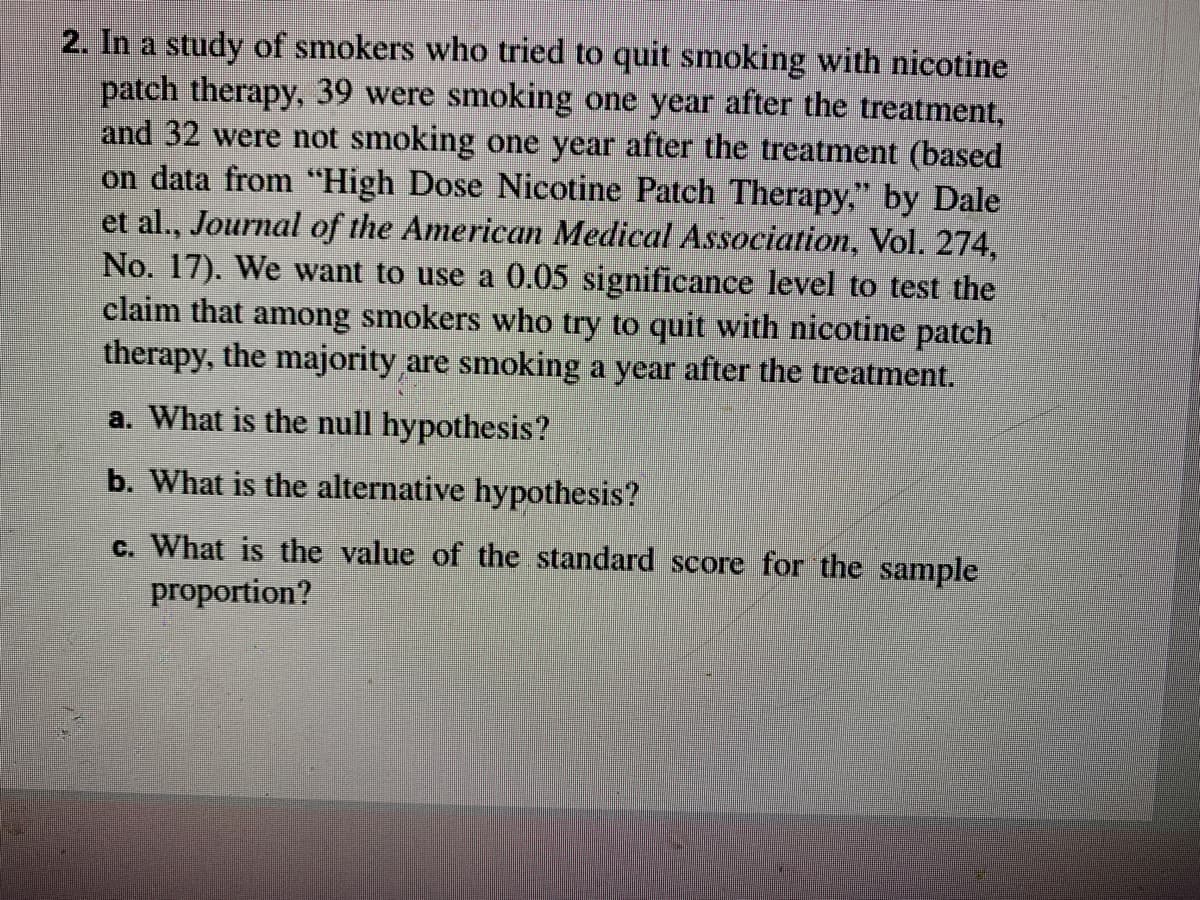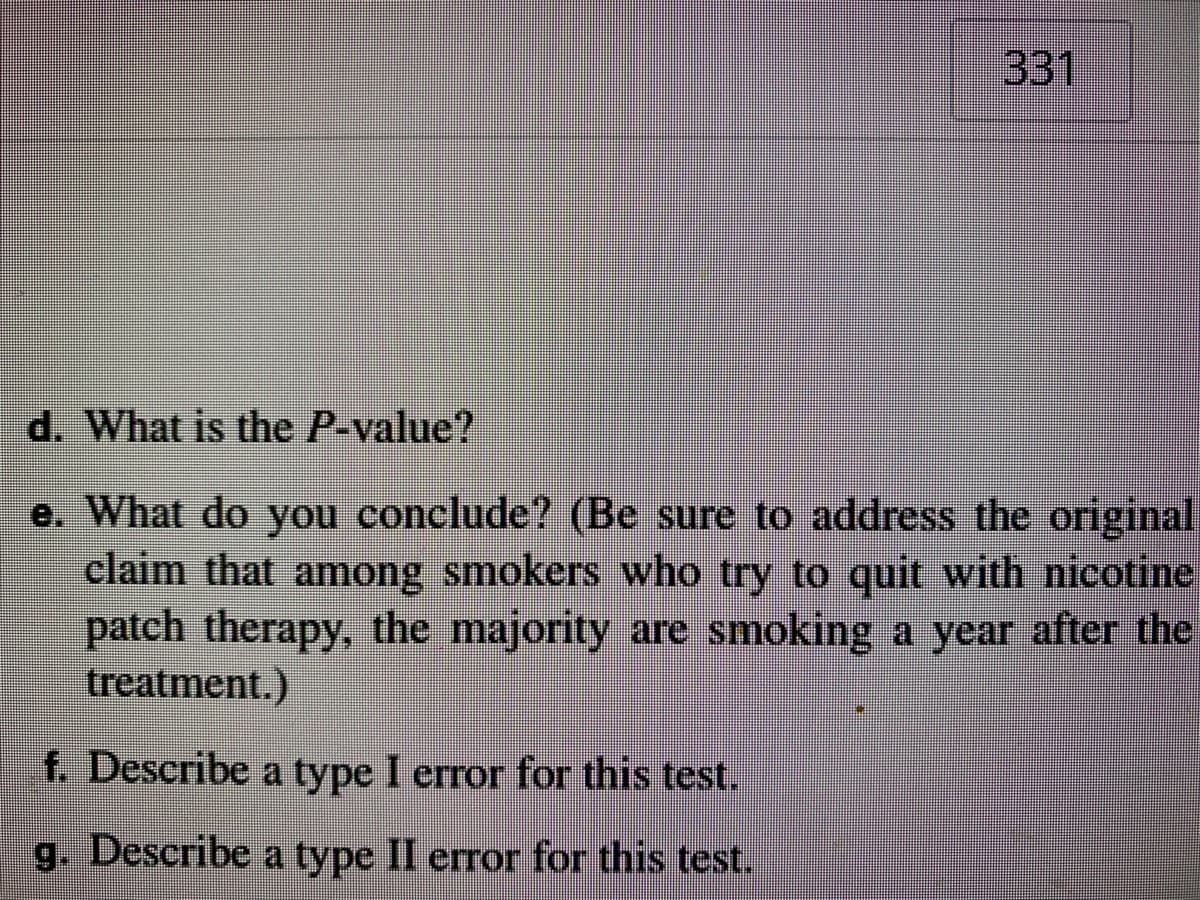2. In a study of smokers who tried to quit smoking with nicotine patch therapy, 39 were smoking one year after the treatment, and 32 were not smoking one year after the treatment (based on data from "High Dose Nicotine Patch Therapy," by Dale et al., Journal of the American Medical Association, Vol. 274, No. 17). We want to use a 0.05 significance level to test the claim that among smokers who try to quit with nicotine patch therapy, the majority are smoking a year after the treatment. a. What is the null hypothesis? b. What is the alternative hypothesis? c. What is the value of the standard score for the sample proportion?
2. In a study of smokers who tried to quit smoking with nicotine patch therapy, 39 were smoking one year after the treatment, and 32 were not smoking one year after the treatment (based on data from "High Dose Nicotine Patch Therapy," by Dale et al., Journal of the American Medical Association, Vol. 274, No. 17). We want to use a 0.05 significance level to test the claim that among smokers who try to quit with nicotine patch therapy, the majority are smoking a year after the treatment. a. What is the null hypothesis? b. What is the alternative hypothesis? c. What is the value of the standard score for the sample proportion?
College Algebra (MindTap Course List)
12th Edition
ISBN:9781305652231
Author:R. David Gustafson, Jeff Hughes
Publisher:R. David Gustafson, Jeff Hughes
Chapter8: Sequences, Series, And Probability
Section8.7: Probability
Problem 58E: What is meant by the sample space of an experiment?
Related questions
Topic Video
Question
I need help with question 2

Transcribed Image Text:2. In a study of smokers who tried to quit smoking with nicotine
patch therapy, 39 were smoking one year after the treatment,
and 32 were not smoking one year after the treatment (based
on data from “High Dose Nicotine Patch Therapy," by Dale
et al., Journal of the American Medical Association, Vol. 274,
No. 17). We want to use a 0.05 significance level to test the
claim that among smokers who try to quit with nicotine patch
therapy, the majority are smoking a year after the treatment.
a. What is the null hypothesis?
b. What is the alternative hypothesis?
c. What is the value of the standard score for the sample
proportion?

Transcribed Image Text:331
d. What is the P-value?
e. What do you conclude? (Be sure to address the original
claim that among smokers who try to quit with nicotine
patch therapy, the majority are smoking a year after the
treatment.)
f. Describe a type I error for this test.
g. Describe a type II error for this test.
Expert Solution
This question has been solved!
Explore an expertly crafted, step-by-step solution for a thorough understanding of key concepts.
This is a popular solution!
Trending now
This is a popular solution!
Step by step
Solved in 3 steps with 5 images

Knowledge Booster
Learn more about
Need a deep-dive on the concept behind this application? Look no further. Learn more about this topic, statistics and related others by exploring similar questions and additional content below.Recommended textbooks for you

College Algebra (MindTap Course List)
Algebra
ISBN:
9781305652231
Author:
R. David Gustafson, Jeff Hughes
Publisher:
Cengage Learning

College Algebra (MindTap Course List)
Algebra
ISBN:
9781305652231
Author:
R. David Gustafson, Jeff Hughes
Publisher:
Cengage Learning